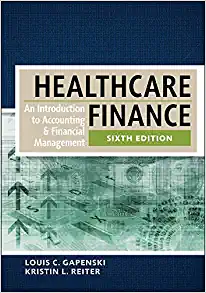Question
A beverage company that currently sells grape juice is considering adding apple juice to its product line.They have determined they can sell the new product,
A beverage company that currently sells grape juice is considering adding apple juice to its product line.They have determined they can sell the new product, apple juice, for $1.00 per bottle.Their manufacturing plant has excess capacity in a fully depreciated building to process the apple juice drink.The apple juice drink will be discontinued after three years.The new equipment will be depreciated straight line to zero over three years. The new apple juice project will require an additional $30,000 of working capital.The projected sales of the apple juice are 250,000 bottles the first year, with a 10% sales growth rate for both the following years. Variable costs are 35% of sales and fixed costs are $40,000 each year.The new equipment costs $450,000 and will have a salvage value of $100,000. The corporate marginal tax rate is 30% and the company currently has 1,000,000 shares of stock outstanding at a current price of $25 per share.The company also has 20,000 bonds outstanding, with a current price of $980.The bonds pay interest semi-annually and the coupon rate is 6%.The bonds have a par value of $1,000 and will mature in 14 years. Even though the company has stock outstanding it is not publicly traded.Therefore, there is no public financial information available.However management believes that given the industry they are in, the most reasonable comparable publicly traded company is the Coca-Cola Company (ticker symbol KO). In addition, management believes the S&P 500 is a reasonable proxy for the market portfolio. Therefore, the cost of equity is calculated using the beta from KO and the market risk premium based on the S&P 500 annual expected rate of return.(We calculated a monthly expected return for the market in the return exercise.You can simply multiply that rate by 12 for an expected annual rate on the market.) Use the most recent 3 year Treasury Bill rate for the Risk Free Rate. The WACC is then calculated using this information and the other information provided above. Clearly show all your calculations and sources for all parameter estimates used in the WACC.
Required In the Blank Template worksheet tab:
1. Fill in all the yellow shaded cells with the given information.
2. Insert formulas in the blue shaded cells, II. Calculations, referencing cells in Section I.You can calculate the cost of debt using the =Rate formula, and the given bond information.
3. Enter formulas in the blue cells in Sections III, IV, V and VI creating a partial income statement, incremental cash flows including terminal cash flows and the calulation of NPV.
4.The EXCEL worksheet is now set up so that you are able to change the parameters in Section I.By changing the value in cell H4 run three possible cases, best 20% growth, most likely 10% growth, and worst case 0% growth rate and enter the NPV's in Section VII.
5. State whether the company should accept or reject the project for each case scenario.
6. Create a NPV profile for the most likely case scenario.(In the NPV Calculation tab)
Step by Step Solution
There are 3 Steps involved in it
Step: 1

Get Instant Access to Expert-Tailored Solutions
See step-by-step solutions with expert insights and AI powered tools for academic success
Step: 2

Step: 3

Ace Your Homework with AI
Get the answers you need in no time with our AI-driven, step-by-step assistance
Get Started


